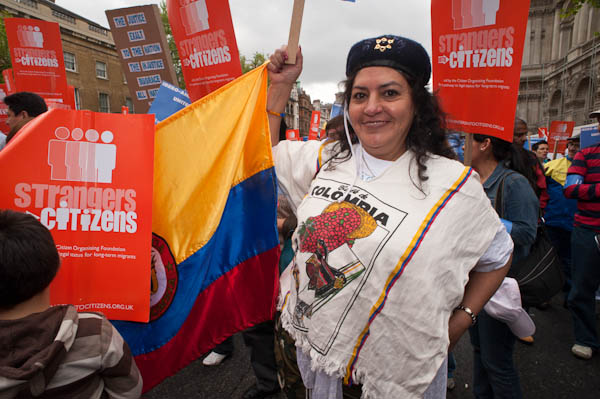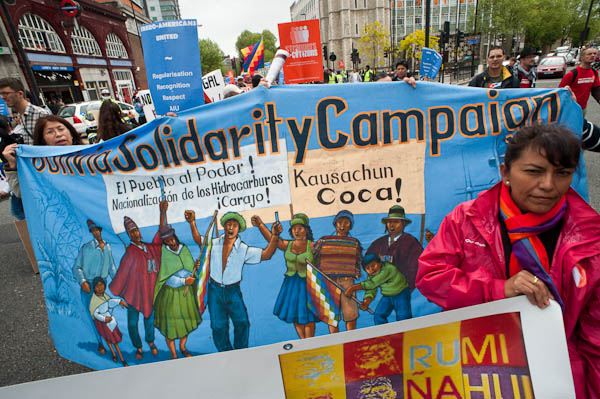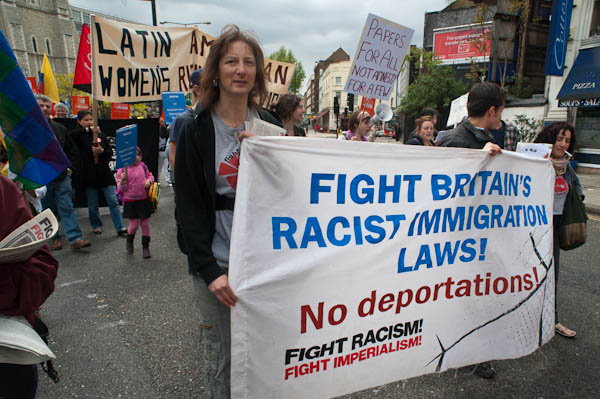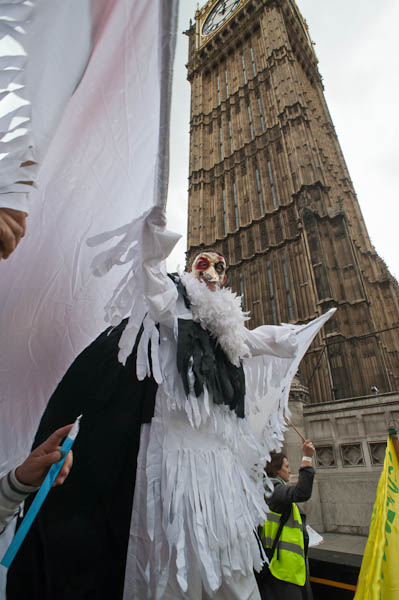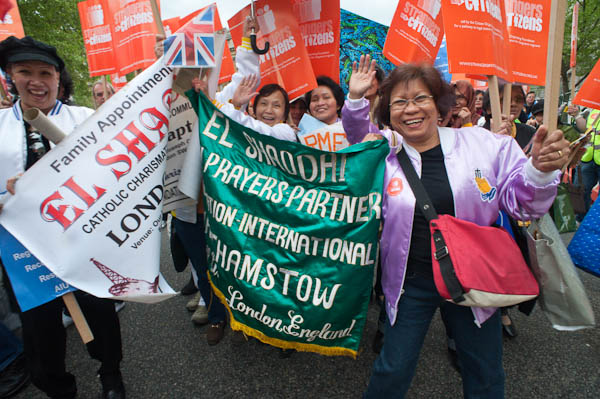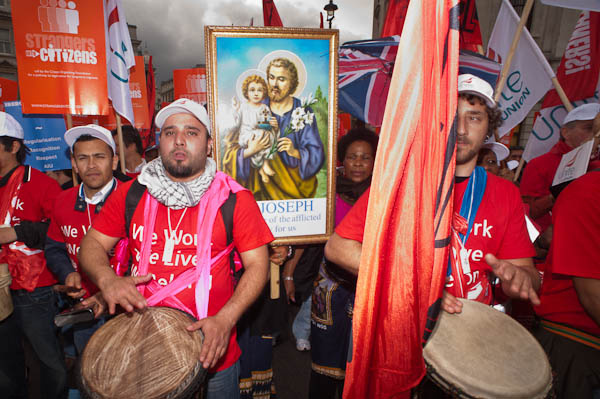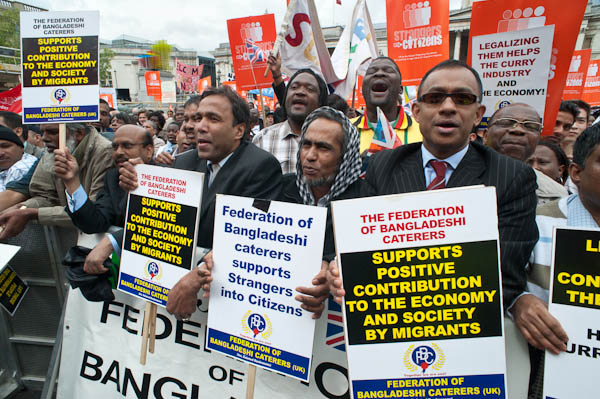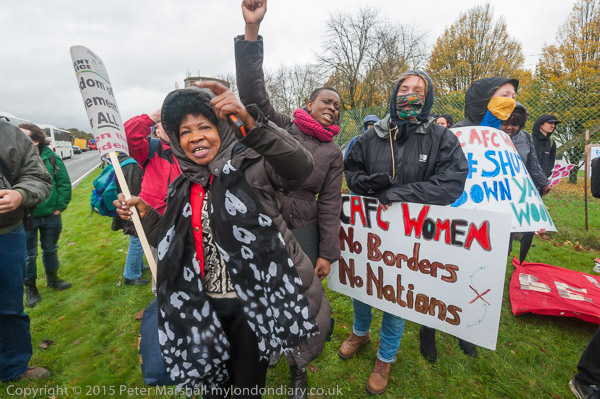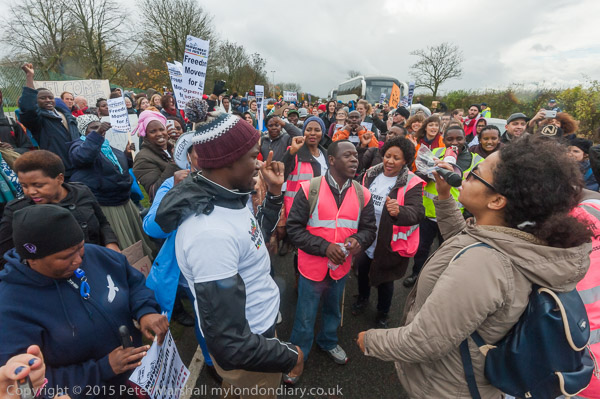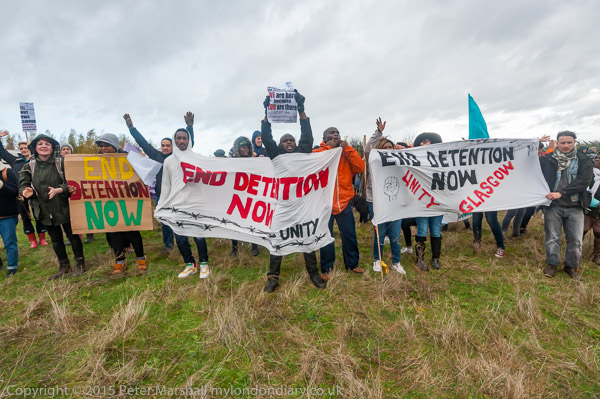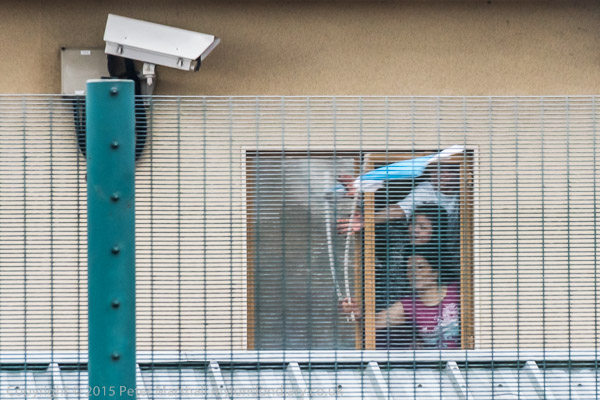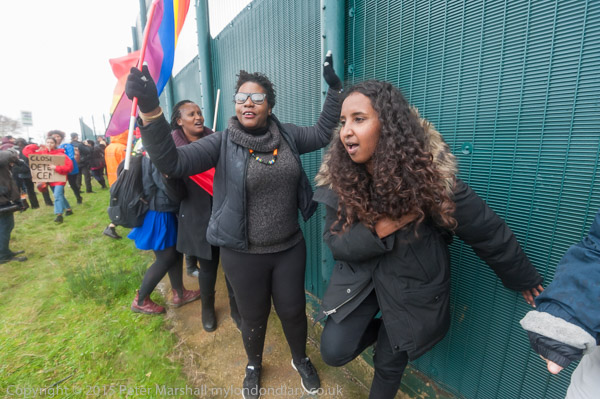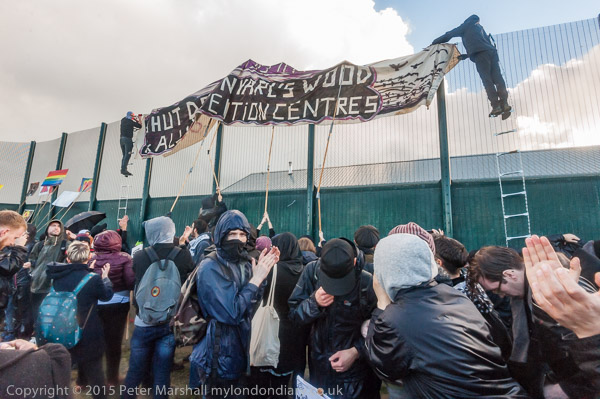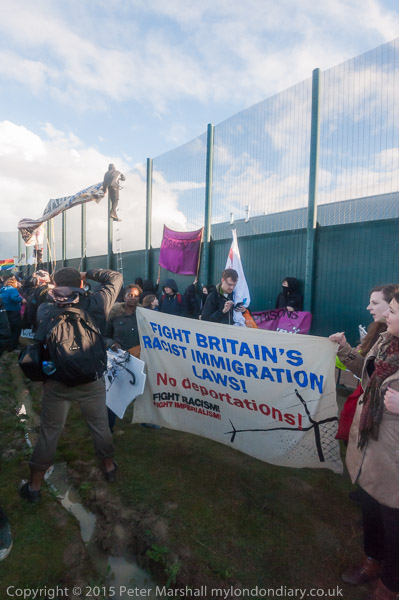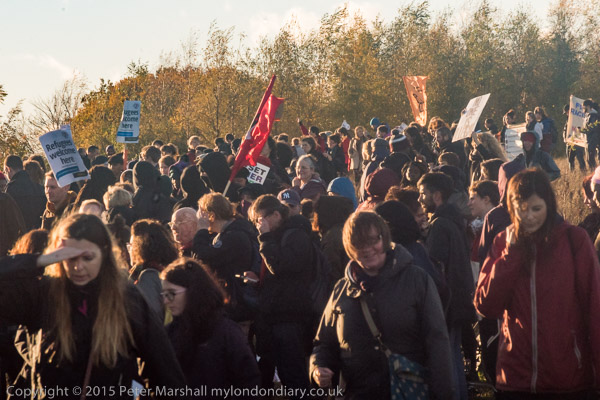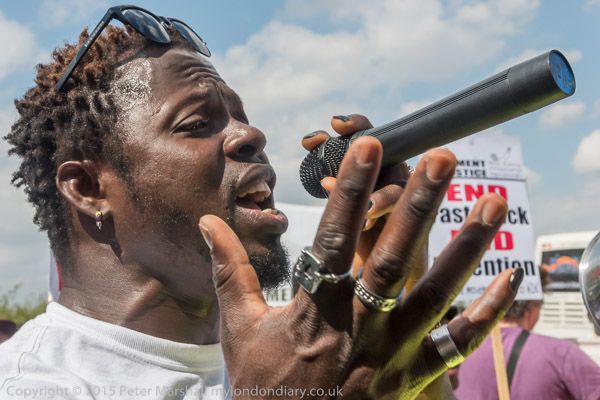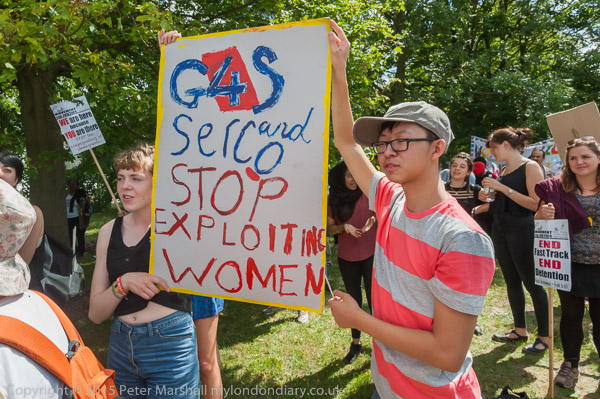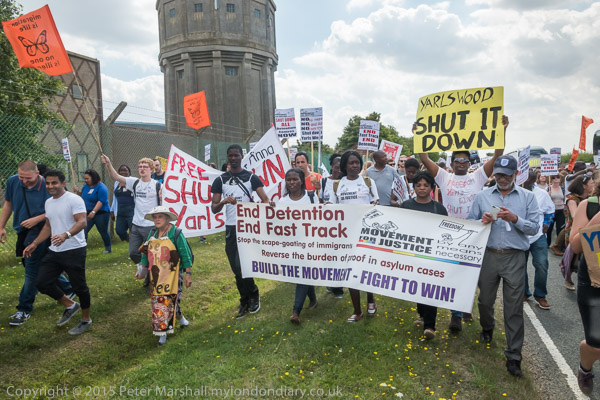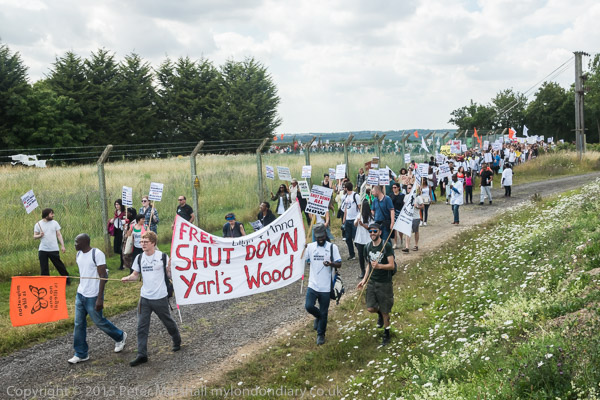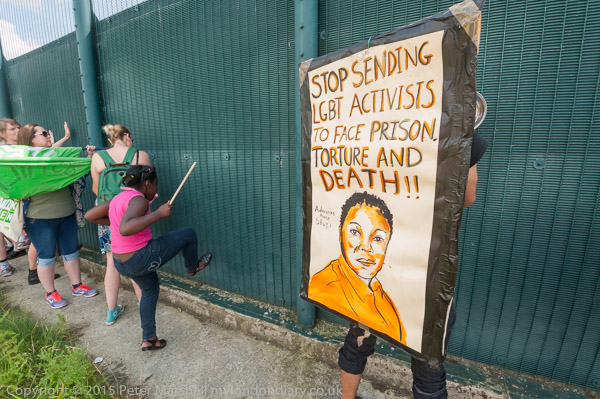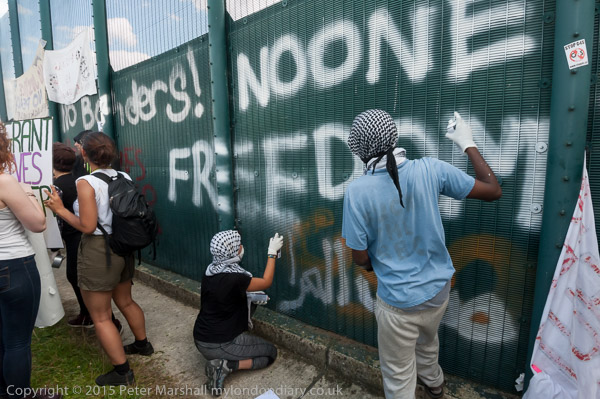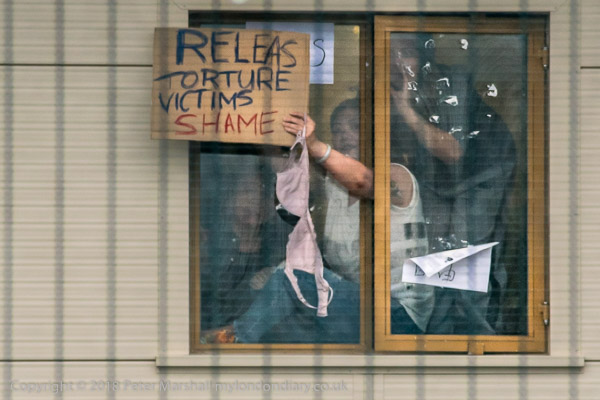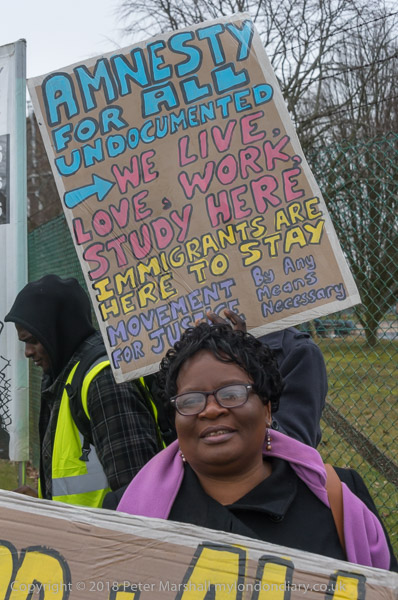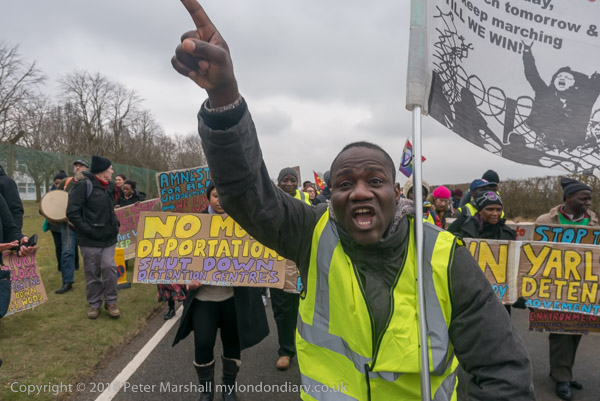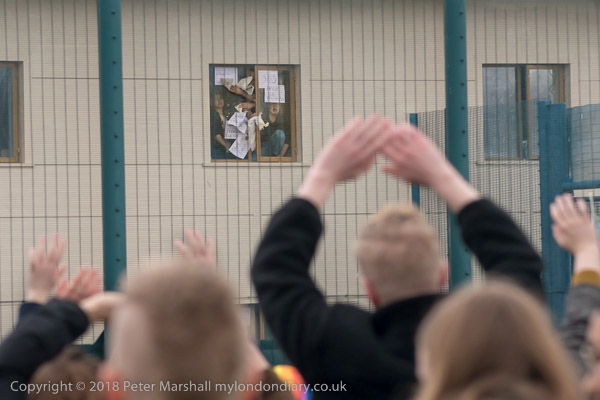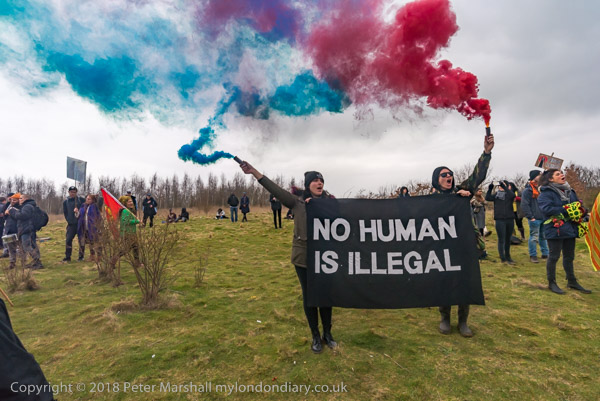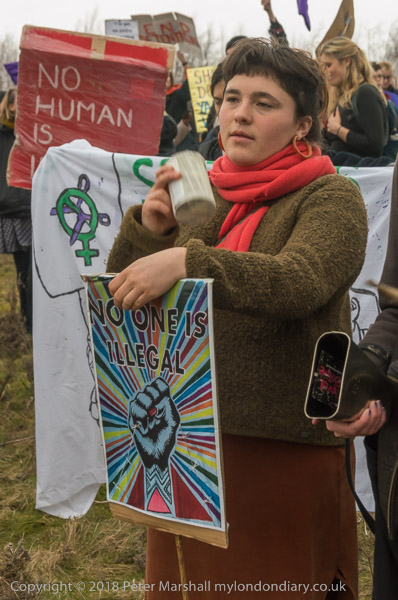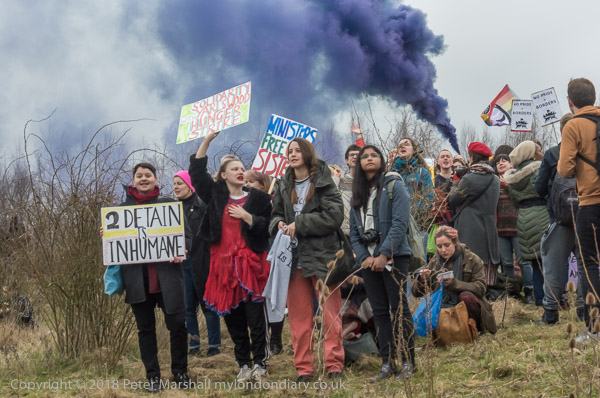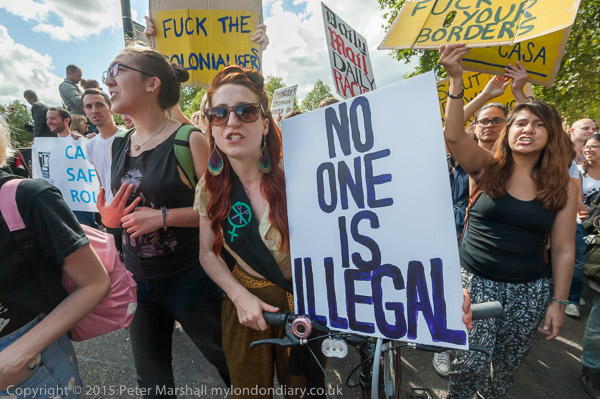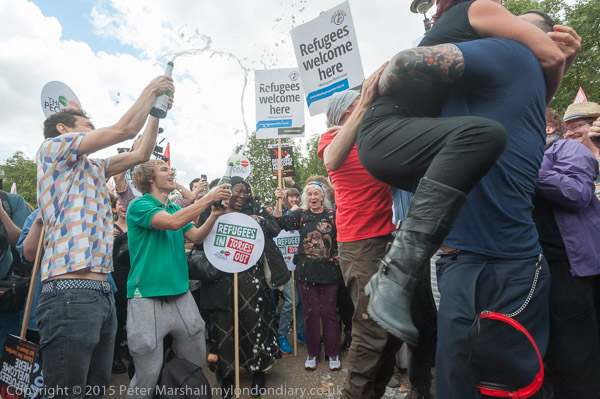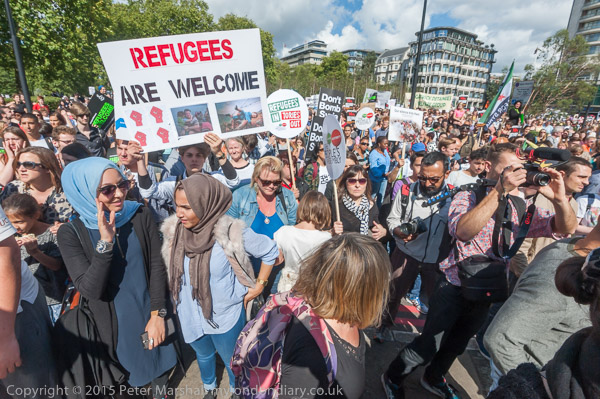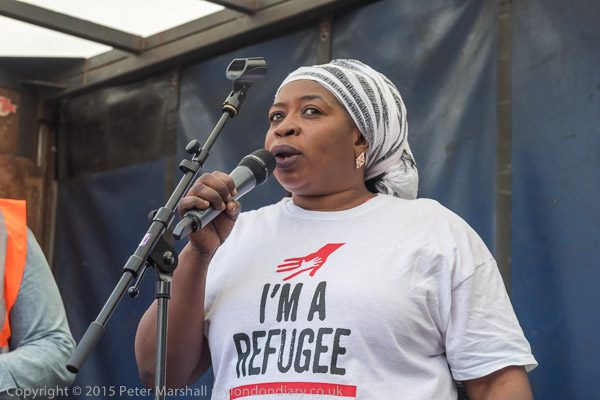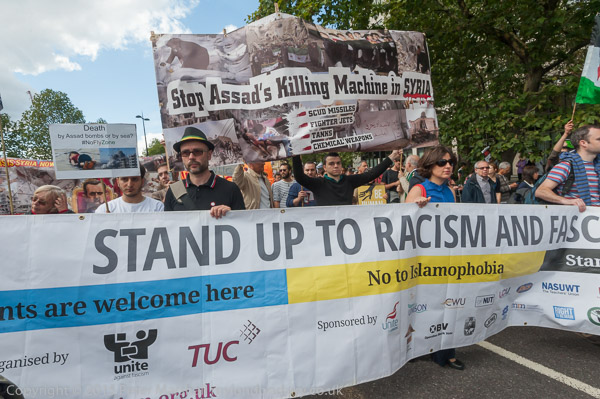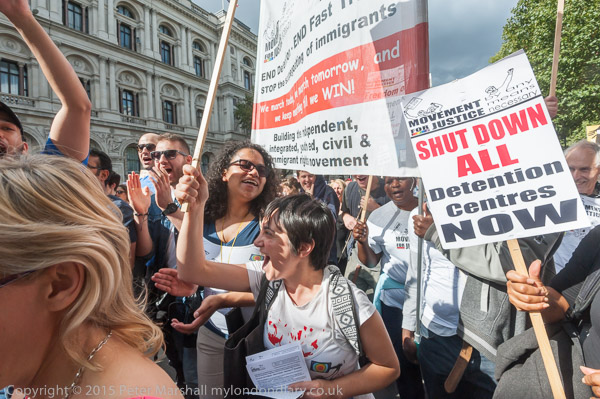Stand Up to Racism & Kites Not Drones: On Saturday 22 March 2014, the day following UN Anti-Racism Day (chosen to remember the 69 people killed by police in the Sharpeville massacre in South Africa on 21 March 1960), the TUC and Unite Against Fascism organised a march and rally as a part of a European day of action against racism.

Thousands – perhaps as many as 20,000 – turned up to march the short distance from Old Palace Yard opposite parliament to a long rally in Trafalgar Square – on My London Diary I list 19 speakers, though I think there were a few more on the day, but I didn’t stop to listen to all of them, going instead to Hyde Park where a smaller protest by peace activists tried without much success to fly kites in in solidarity with the people of Afghanistan.
Stand Up to Racism – Westminster
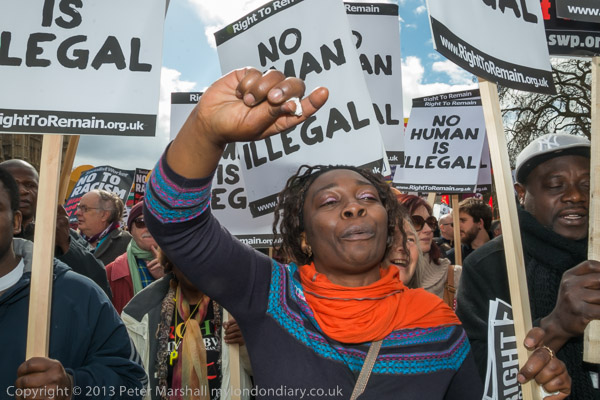
This protest stood out for the wide range of people and organisations who had come to join it, “many of whom are sickened by the anti-immigrant policies of successive governments and opposition parties who have long been engaged in trying to outdo each other in the ‘toughness’ of their immigration policies, and have recently moved even further to the right in an effort to neutralise the political threat of UKIP and Nigel Farage.”
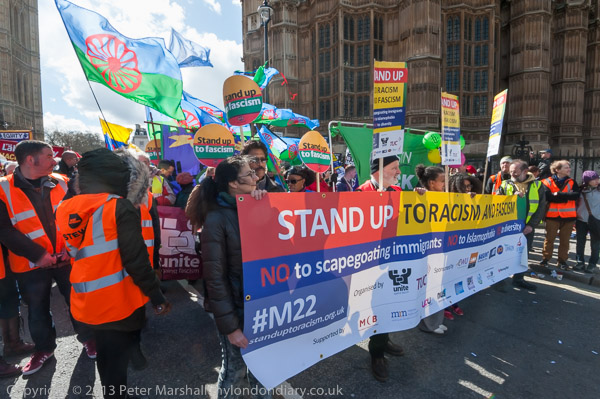
And since 2014 the main parties have kept moving to the right. We continue to see this scapegoating of immigrants in the policies both of the current government and its recent Tory predecessors, particularly in the campaigns and legislation against those who cross the channel in small boats, but also in restrictions on those who claim asylum here and the harassment being suffered by many who have made their lives here and contributed to our society but are now threatened by deportation, dragging them away from families and friends. Still we have not set up safe routes for asylum seekers to come to Britain, still we have not offered amnesties to those who have worked here and made useful and essential contribution here for years.

I photographed many of the marchers in Parliament Square, where the march had been planned to start close to the statue of Nelson Mandela who had celebrated “the ideal of a democratic and free society in which all persons live together in harmony and equal opportunities” as the aim of the fight for freedom and equality in South Africa.
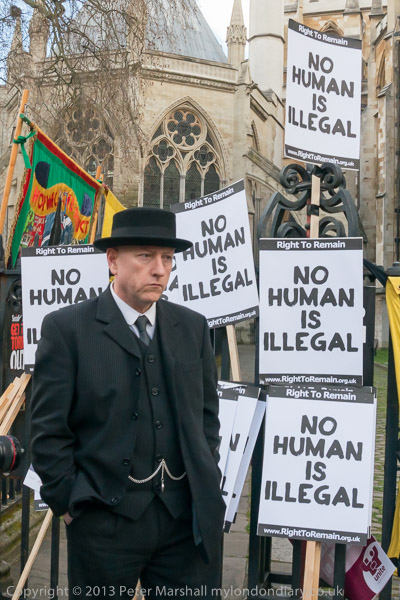

Some posed in front on the grass with ‘Big Ben’ in the background, a name I like to use as it annoys pedants, but is what everyone except them still calls the clock tower which Wikipedia describes as “one of the most prominent symbols of the United Kingdom and parliamentary democracy.”

Among those taking part were people from our Roma and Muslim communities who bear no responsibilities for our country’s current problems and suffer more than most from them while at the same time being blamed by the racist right for them.

“In particular we have seen many promoting fear and hate of Muslims associating the whole community with the acts of a tiny few. Islamophobia is rife and has led to more attacks on the Muslim population, including murder and violent attacks on mosques. “
More from 2014 on My London Diary at Stand Up to Racism.
Kites Not Drones Solidarity with Afghanistan – Hyde Park
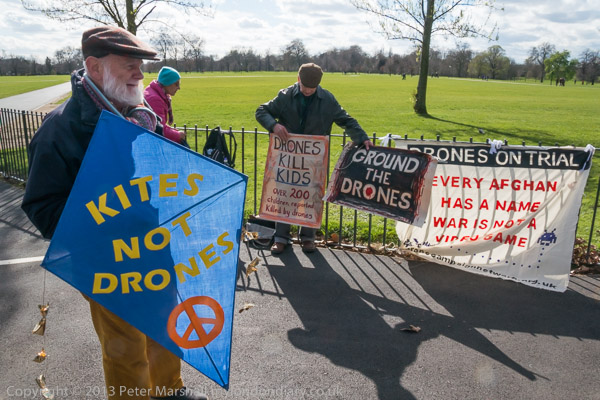
This protest by peace activists was part of a weekend of solidarity with the Afghan people who traditionally celebrate their New Year (Now Ruz) on the Spring Equinox by flying kites. (Until 1752 the New Year began at around the same time in Britain and its colonies on Lady Day March 25th.)

In 2014 I quoted the organisers statement:
‘Kite flying has become synonymous with Afghanistan as a well loved pursuit which was banned under the Taliban, now Afghans are more used to the presence of UK armed and surveillance drones flying overhead.’
‘We are encouraging peace groups, Afghans in the UK and the Muslim community to fly kites in solidarity with Afghans who now have to live under the mental pressure and physical destruction which British drones (currently operated from RAF Waddington, Lincoln) now reap upon Afghanistan.’

None of those taking part appeared to have had any previous experience in actually flying kites, and although the photographers present helped, the gusty conditions only allowed some short and erratic flights, with one kite getting stuck up a tree. For once a police officer was sympathetic, and having come across to tell the protesters that flying kites was not allowed in this or the other Royal Parks told them that so long as they stayed in this empty area of the park and were not a nuisance to others he would not stop them.
More at Kites Not Drones Solidarity with Afghanistan.
Flickr – Facebook – My London Diary – Hull Photos – Lea Valley – Paris
London’s Industrial Heritage – London Photos
All photographs on this page are copyright © Peter Marshall.
Contact me to buy prints or licence to reproduce.
